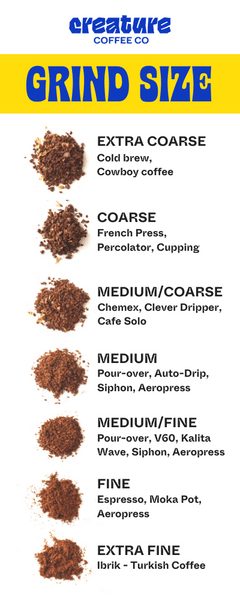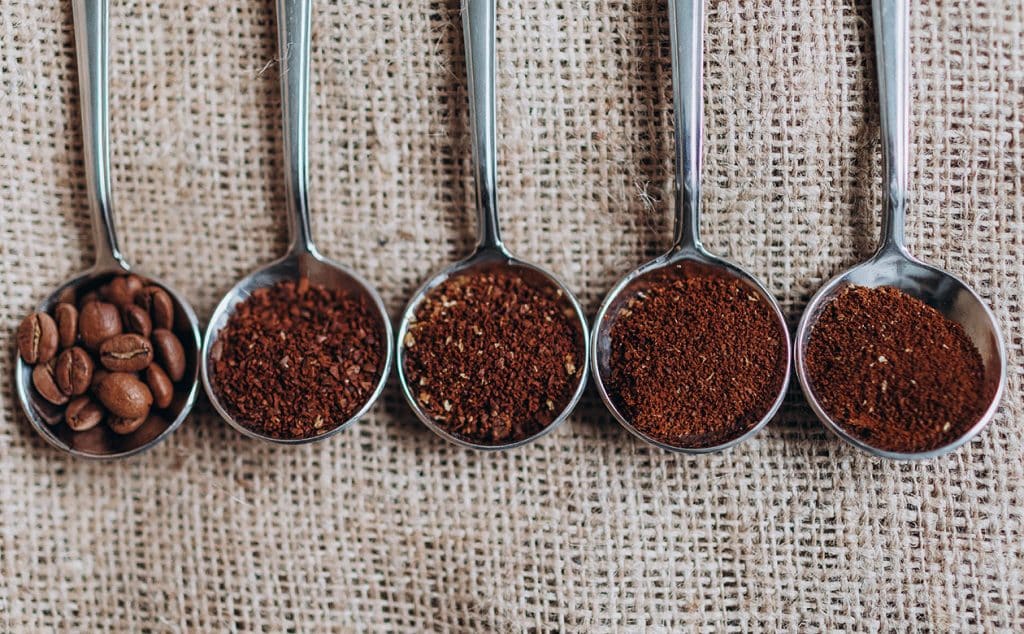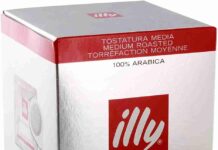Coffee lovers know that the key to a truly flavorful cup of joe lies in the grind. But with so many options available, it can be overwhelming to determine how to achieve that perfect grind. From coarse to fine, each grind size unlocks a different aroma and taste. In this article, we’ll explore the art of grinding coffee beans to maximize flavor, ensuring that every sip is a delightful experience. So sit back, relax, and prepare to embark on a journey to brewing the best-tasting coffee ever.
This image is property of static.wixstatic.com.
Why is grinding coffee important?
Grinding coffee is a crucial step in the coffee brewing process that greatly impacts the flavor and overall quality of your cup. By breaking down the beans into smaller particles, grinding exposes a larger surface area, making it easier for water to extract the desirable flavors from the coffee grounds. However, the grind size and uniformity, along with other factors such as the brewing method and roast level, play a significant role in determining the final taste of your coffee.
The impact of grind size on flavor
The grind size of your coffee is crucial because it directly affects the extraction process and ultimately the flavor profile of your brew. A coarse grind will result in a slower extraction, producing a milder and less flavorful cup, while a finer grind will lead to a faster extraction and a bolder, more robust flavor. Finding the right grind size is a delicate balance that can dramatically enhance or diminish the taste of your coffee.
The extraction process
The extraction process is where the magic happens, where water extracts the desired compounds from the ground coffee beans. When water comes in contact with the coffee grounds, it solubilizes numerous compounds, including acids, sugars, and aromatic oils, which contribute to the complex flavors and aromas of coffee. The goal is to extract these desirable compounds while avoiding the unwanted bitterness and over-extraction, which can occur with improper grind size or brewing techniques.
Preserving the volatile compounds
One of the key reasons why grinding coffee is essential is to preserve the volatile compounds present in the beans. The aroma and flavor notes specific to each coffee variety are delicate and easily lost if not handled properly. By grinding your coffee just before brewing, you ensure that these volatile compounds remain intact, resulting in a fresher and more vibrant taste.
Factors to consider when grinding coffee
Choosing the right grind size is just one aspect to consider when grinding coffee for optimal flavor. Several other factors can significantly impact the taste of your brew. Let’s take a closer look at each of these factors.
Grind size
The grind size determines the surface area available for extraction and can heavily influence the flavor of your coffee. A finer grind will expose more surface area, leading to a stronger, more intense flavor, while a coarser grind will extract fewer compounds and result in a milder cup. Experimenting with different grind sizes is key to find the perfect balance for your taste preferences.
Grind uniformity
Grind uniformity refers to the consistency of the particles produced during the grinding process. When the particles are consistently sized, it promotes an even extraction, ensuring that all the flavors are extracted uniformly. In contrast, an inconsistent grind size can lead to over-extraction of finer particles, resulting in bitterness, while larger particles may be under-extracted, leading to a weak and watery brew.
Burr vs. blade grinders
The type of grinder you use also plays a significant role in achieving a consistent and high-quality grind. Burr grinders, which consist of two abrasive surfaces (burrs) that crush the coffee beans, are known for producing a more uniform grind compared to blade grinders. Blade grinders, which use rotating blades to chop the beans, are less precise and can result in an uneven grind size.
Freshness of the beans
Using fresh beans is crucial to achieving the best flavor in your coffee. As coffee beans age, they gradually lose their natural flavors and aromas. It is recommended to buy whole beans and grind them just before brewing to ensure freshness and maximize the flavors present in the beans.
Roast level
The roast level of your coffee beans also impacts the grind size and overall flavor. Lighter roasts tend to have a denser structure and require a coarser grind to allow for proper extraction, while darker roasts are more porous and benefit from a finer grind. Adjusting the grind size according to the roast level ensures that the extraction process extracts the desired flavors effectively.
Brewing method
Different brewing methods require specific grind sizes to achieve optimal results. For example, a French press requires a coarse grind to prevent fine particles from passing through the mesh filter, while espresso machines necessitate a finely ground coffee to facilitate the high-pressure extraction process. Understanding the grind size requirements for your preferred brewing method is crucial for a well-balanced and flavorful brew.
Choosing the right grind size
Selecting the appropriate grind size for your coffee is crucial in achieving the desired flavor profile. Let’s delve into the different grind sizes and their recommended brewing methods.
Overview of different grind sizes
Grind sizes can be broadly categorized into three main types: coarse, medium, and fine. The size of the grind affects the extraction rate and determines the flavor intensity of your coffee. Experimenting with grind sizes allows you to customize your brew to suit your preferences.
Coarse grind for French press
When brewing coffee using a French press, a coarse grind is recommended. The larger particles prevent fine sediment from passing through the mesh filter, resulting in a clean cup of coffee with a rich and robust flavor. A French press typically requires a grind size resembling coarse sea salt.
Medium grind for drip coffee
For drip coffee makers, such as automatic coffee machines and pour-over cones, a medium grind is ideal. This grind size falls between the coarser grind used in French press and the finer grind required for espresso. The medium grind ensures a balanced extraction, producing a smooth and flavorful cup of coffee.
Fine grind for espresso
Espresso machines require a fine grind to achieve the desired extraction within a short period. The fine grind enables the pressurized water to extract the flavors and oils from the coffee grounds efficiently. Finely ground coffee resembles a fine powder, similar to table salt. However, it is crucial to note that the optimal grind size for your espresso machine may vary, so it’s a good idea to experiment and adjust accordingly.
Understanding grind uniformity
Grind uniformity refers to the consistency of the coffee particles produced during grinding. Achieving a uniform grind is essential in obtaining an evenly extracted cup of coffee with balanced flavors. Let’s explore the importance of grind uniformity in more detail.
Effects of uneven grind
An uneven grind size can significantly impact the extraction process and ultimately the taste of your coffee. Fine particles tend to over-extract quickly, resulting in a bitter and harsh brew, while larger particles may remain under-extracted, leading to a weak and watery cup. Inconsistencies in grind size can result in a brew with an imbalanced flavor profile, as some areas are over-extracted while others are under-extracted.
Consistency for even extraction
Consistency in grind size is crucial for achieving an even extraction. When the particles are consistent in size, they absorb water uniformly, releasing flavors and aromas evenly. This results in a well-balanced cup of coffee with all the desirable qualities. By contrast, an inconsistent grind can lead to areas of over-extraction or under-extraction, negatively affecting the overall flavor and balance of the brew.
Benefits of using a burr grinder
Burr grinders are generally preferred over blade grinders for their ability to produce a more consistent and uniform grind size. With burr grinders, the distance between the two burrs can be adjusted, allowing for precise control over the grind size. This control ensures that the particles are uniform in size, promoting an even extraction and ultimately a better-tasting cup of coffee. Burr grinders also generate less heat during the grinding process, reducing the risk of affecting the flavor of the coffee.
This image is property of cdn.shopify.com.
Burr grinders vs. blade grinders
The type of grinder you choose can have a significant impact on the quality and consistency of your coffee grind. Let’s compare the characteristics of burr grinders and blade grinders.
Differences in grinding mechanism
Burr grinders and blade grinders differ in their grinding mechanism. Burr grinders use two abrasive surfaces (burrs), either flat or conical, to crush the coffee beans into a consistent grind size. Blade grinders, on the other hand, use rotating blades to chop the beans, resulting in a less uniform grind with variations in particle size.
Advantages of burr grinders
Burr grinders offer several advantages over blade grinders. Firstly, they produce a more consistent and uniform grind size, which leads to a more even extraction and a better-tasting cup of coffee. Secondly, burr grinders allow for adjustable grind sizes, catering to different brewing methods and personal preferences. Lastly, burr grinders generate less heat during the grinding process, reducing the risk of heat interfering with the coffee’s flavor compounds.
Limitations of blade grinders
Blade grinders, while affordable and readily available, have some limitations. Their grinding mechanism does not produce a consistent grind size, resulting in an uneven extraction and a potentially imbalanced flavor profile. Additionally, blade grinders generate more heat during the grinding process, which can alter the flavors in the coffee. However, for those who prioritize convenience over precision, blade grinders may still be a suitable option.
Importance of using fresh beans
The freshness of your coffee beans significantly impacts the flavor of your brew. Understanding why using fresh beans is essential will elevate your coffee experience to new heights.
Degradation of flavor over time
Coffee beans, like any other natural product, undergo degradation over time. As the beans are exposed to oxygen, light, and moisture, their flavor compounds begin to break down, resulting in a loss of aroma, taste, and complexity. Therefore, using fresh beans ensures that the flavors remain vibrant, allowing you to enjoy the full spectrum of taste that coffee has to offer.
Avoiding pre-ground coffee
Pre-ground coffee may seem convenient, but it sacrifices the freshness and flavor of your brew. When coffee beans are ground, they immediately begin to lose their aroma and flavor. The larger surface area exposed to oxygen accelerates the degradation process, resulting in a stale-tasting cup of coffee. Opting for whole beans and grinding them just before brewing ensures maximum freshness and flavor retention.
Storage tips for freshness
To maintain the freshness of your coffee beans, proper storage is crucial. Store your coffee beans in an airtight container, away from light, heat, and moisture. It is recommended to keep the beans in a cool, dark place, such as a pantry or cupboard. Avoid storing coffee beans in the refrigerator or freezer, as they can absorb odors from other foods and may have adverse effects on the flavor.
This image is property of cdn.shopify.com.
Considering the roast level
The roast level of your coffee beans plays a significant role in determining the grind size and flavor profile of your brew. Let’s explore how different roast levels impact the brewing process.
Impact of roast level on grind
Roast level affects the density and structure of coffee beans, which, in turn, influences the grind size required for optimal extraction. Lighter roasts are generally denser and require a coarser grind to allow water to penetrate adequately and extract the flavors. On the other hand, darker roasts are less dense and require a finer grind to ensure proper extraction.
Adapting the grind for different roasts
To achieve the best flavor from your coffee, it’s vital to adjust the grind size based on the roast level. For lighter roasts, a coarser grind allows for a more gentle extraction, preserving the delicate and nuanced flavors. Darker roasts, being less dense, benefit from a finer grind to ensure sufficient extraction and enhance the bold and rich characteristics associated with these roasts.
Profiles of light, medium, and dark roasts
Light roasts are known for their bright acidity, floral notes, and subtle flavors. A coarser grind allows for a more delicate extraction, highlighting the distinct characteristics of these beans. Medium roasts strike a balance between brightness and richness, offering nutty, chocolatey, and slightly more pronounced flavors. A medium grind suits these beans, enabling a well-rounded extraction. Dark roasts are characterized by their intense and robust flavors, often exhibiting smoky or caramelized notes. A finer grind extracts the richness and depth from these beans, resulting in a bold cup of coffee.
Matching the grind to your brewing method
To achieve the best possible cup of coffee, it is essential to match the grind size to your brewing method. Let’s explore the recommended grind size for some popular brewing methods.
Grind recommendations for various methods
-
Pour-over: For pour-over methods, such as Chemex or V60, a medium to medium-fine grind works well. This allows for even extraction and balance between clarity and body.
-
Espresso: Espresso machines require a fine grind to ensure proper extraction under high pressure. This grind size resembles a fine powder, similar to table salt.
-
Cold brew: Cold brew requires a coarse grind to accommodate the longer brewing time and the need for a smoother, less acidic cup. The larger grind size prevents over-extraction during the extended steeping period.
Each brewing method has its unique requirements, and adjusting the grind size accordingly allows for optimal extraction and the best representation of the flavor potential in your coffee beans.
This image is property of cdn.shopify.com.
The role of consistency in grinding
Consistency plays a crucial role in achieving a high-quality grind for your coffee. Understanding the importance of particle size distribution and using appropriate techniques can significantly enhance the flavor and overall experience.
Understanding particle size distribution
Particle size distribution refers to the range of particle sizes present in a sample of ground coffee. This distribution greatly influences the extraction process, as different particle sizes contribute to the flavors and aromas extracted during brewing. Ideally, a consistent particle size distribution promotes an even extraction and balanced flavor profile.
Distribution analysis techniques
Coffee enthusiasts and professionals often employ distribution analysis techniques to better understand and control their grind size consistency. These techniques rely on sifting, measuring, and analyzing the particle size distribution using specialized tools such as sieves or laser diffraction devices. By identifying any inconsistencies or deviations in the grind size, adjustments can be made to achieve a more uniform grind.
Achieving a consistent grind
To achieve a consistent grind, it is important to invest in a quality grinder and establish a reliable grinding technique. Burr grinders are generally preferred for their ability to produce a more consistent grind compared to blade grinders. Additionally, using a scale to measure your coffee beans and maintaining a consistent grinding time and speed can also contribute to a more uniform grind.
Grinding techniques for enhanced flavor
Beyond choosing the right grind size and ensuring consistency, there are additional techniques that can enhance the flavor of your coffee. Let’s explore some of these techniques.
Pre-infusion
Pre-infusion involves saturating the coffee grounds with a small amount of water before the main extraction begins. This allows the coffee to bloom, releasing trapped gases and initiating the extraction process more evenly. Pre-infusion can improve the clarity and sweetness of your brew, resulting in a more nuanced and flavorful cup of coffee.
Stepped vs. stepless grinders
Grinders equipped with stepped adjustments allow you to switch between preset grind sizes, offering some level of control over your grind. On the other hand, stepless grinders provide infinite grind size settings, enabling precise adjustments. The ability to fine-tune the grind size allows you to dial in the extraction to achieve the desired flavors and balance in your cup.
Adjusting grind based on extraction time
Another technique to optimize flavor is adjusting the grind size according to the desired extraction time. An extraction that is too short may result in an under-extracted brew, lacking depth and flavor complexity. In contrast, an over-extracted brew can taste harsh and bitter. Lengthening or shortening the extraction time by adjusting the grind size can help achieve the ideal balance and enhance the overall flavor profile of your coffee.
In conclusion, grinding coffee is a crucial step in the coffee brewing process that greatly impacts the flavor and quality of your cup. Consider the factors of grind size, grind uniformity, grinder type, freshness of beans, roast level, and brewing method when grinding your coffee. Adjusting the grind size and employing grinding techniques can enhance the flavor and overall experience. So, take the time to explore different grind sizes and methods to find the perfect balance, and enjoy a delicious, aromatic cup of coffee tailored to your preferences. Happy brewing!
This image is property of perfectdailygrind.com.










































